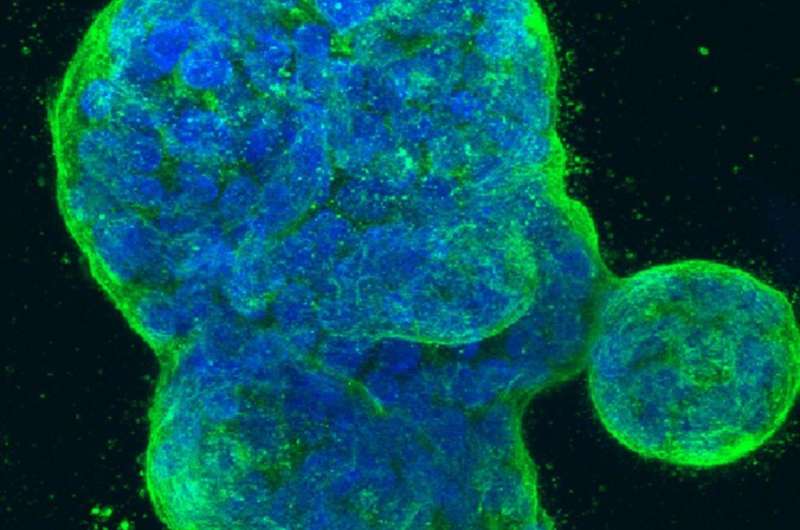Three-dimensional culture of human breast cancer cells, with DNA stained blue and a protein in the cell surface membrane stained green. Image created in 2014 by Tom Misteli, Ph.D., and Karen Meaburn, Ph.D. at the NIH IRP.
A study in Molecular Oncology indicates that examining the protein and RNA in leftover materials from routine diagnostic tests for breast cancer may lead to more accurate diagnoses.
Using samples from fine needle aspiration from 25 patients with breast cancer and 33 patients with benign lesions, investigators found that such a strategy could distinguish all cancer patient samples from all benign lesions.
In addition to providing a conclusive diagnosis, the analysis may prove valuable for subtyping of breast cancer, for determining appropriate therapies for individual patients, and for monitoring the course of disease and responses to therapy, all through minimally invasive techniques.
Provided by Wiley




















